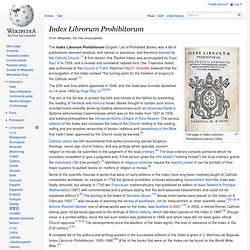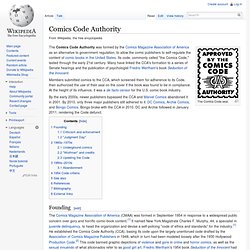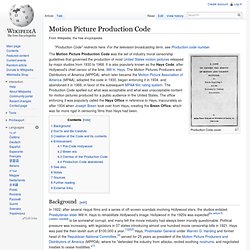

Index Librorum Prohibitorum. Title page of Index Librorum Prohibitorum (Venice 1564).

The Index Librorum Prohibitorum (English: List of Prohibited Books) was a list of publications deemed heretical, anti-clerical or lascivious, and therefore banned by the Catholic Church.[1] A first version (the Pauline Index) was promulgated by Pope Paul IV in 1559, and a revised and somewhat relaxed form (the Tridentine Index) was authorized at the Council of Trent.
Historian Paul F. Grendler believed that the promulgation of the Index marked "the turning-point for the freedom of enquiry in the Catholic world".[1] The 20th and final edition appeared in 1948, and the Index was formally abolished on 14 June 1966 by Pope Paul VI.[2][3][4] The aim of the list was to protect the faith and morals of the faithful by preventing the reading of heretical and immoral books. A complete list of the authors and writings present in the successive editions of the Index is given in J. Background and history[edit] Early indices (1529–1571)[edit] Comics Code Authority. The Comics Code seal.

The Comics Code Authority was formed by the Comics Magazine Association of America as an alternative to government regulation, to allow the comic publishers to self-regulate the content of comic books in the United States. Its code, commonly called "the Comics Code," lasted through the early 21st century. Many have linked the CCA's formation to a series of Senate hearings and the publication of psychologist Fredric Wertham's book Seduction of the Innocent. Members submitted comics to the CCA, which screened them for adherence to its Code, then authorized the use of their seal on the cover if the book was found to be in compliance.
At the height of its influence, it was a de facto censor for the U.S. comic book industry. By the early 2000s, newer publishers bypassed the CCA and Marvel Comics abandoned it in 2001. Founding[edit] Criticism and enforcement[edit] "Judgment Day"[edit] 1960s–1970s[edit] Underground comics[edit] "Wolfman" and credits[edit] Motion Picture Production Code. Production Code cover The Motion Picture Production Code was the set of industry moral censorship guidelines that governed the production of most United States motion pictures released by major studios from 1930 to 1968.

It is also popularly known as the Hays Code, after Hollywood's chief censor of the time, Will H. Hays. The Motion Pictures Producers and Distributors of America (MPPDA), which later became the Motion Picture Association of America (MPAA), adopted the code in 1930, began enforcing it in 1934, and abandoned it in 1968, in favor of the subsequent MPAA film rating system. The Production Code spelled out what was acceptable and what was unacceptable content for motion pictures produced for a public audience in the United States.
Background[edit] In 1922, after several risqué films and a series of off-screen scandals involving Hollywood stars, the studios enlisted Presbyterian elder Will H. Don'ts and Be Carefuls[edit] Creation of the Code and its contents[edit] Breen era[edit]